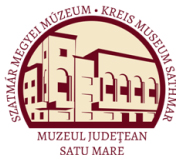Marta, Liviu: The Late Bronze Age Settlements of Petea-Csengersima (Satu Mare, 2009)
IV. Habitation of the Lăpuş II-Gáva I Archaeological Culture
needle in pit S14complex 5/Petea-Csengersima, and a great mass of watde and daub in pit 589/ Petea—Csengersima. The common elements of these three deposits — the presence of the serving and storage vessels — was used as criteria for defining a group of pottery deposits from the Tisa Plain dated to the HaA—B period613. The cups from the deposits at Petea-Csengersima, Lazuri or Gyoma614 * seem to indicate that the vessels had been used to serve and drink liquids. Two of the deposits (pit 154/Lazuri and S14complex 5) contained some pieces with definite use that might allude to the activities performed before the ritual deposits were made: crushing (grinders), boiling (portable cooking vessels), storage (storage jars), vessels used for handling/serving and filtering liquids (cups/ladles, amphorae and strainers). Based on the association of grain grinding — boiling - storage (possibly fermenting) - and the serving of liquids, it was considered that these elements could represent the process of making and consumption of beer, while the cooking vessels from the deposits could have been used to boil the ingredients used in its preparation61 J. IV.7. Dating the Habitation in the Lăpuş II—Gáva I Archaeological Culture The archaeological research in Petea-Csengersima led to the detection of a new cultural horizon in the Plain of Satu Mare that developed between the end of the Suciu de Sus culture and before the period of expansion of the Gáva culture, respectively the rise of the great fortified Hallstattian setdements in the Carpathian region. As it was seen, the ceramic material from the setdement has close analogies within the Lăpuş II type pottery from the north of Transylvania (the Lăpuş Depression and the Sălaj Valley) and Gáva I from the Plain of Carei and the Plain of Nir. The only bronze piece with chronological relevance from the setdement is a Baierdorf type knife (PI. 39/13). In the concentradon areas the pieces are datable in BzD and HaAl. All pieces are situated at the limit of the areas of expansion (the Carpathian Basin and the northern region of Italy) and dated in the Ha A1 phase (Fig. 29). Therefore this type of knife from Petea-Csengersima (PI. 39/13) links the dadng of the setdement to the HaAl phase. The pottery from the setdement at Petea-Csengersima presents close connections with the bronze objects from the Cincu—Suseni/Kurd type deposits, connections that have two aspects. The first of these is represented by two of the vessel forms from these setdements that are present in the Cincu—Suseni/Kurd type bronze deposits. The vessel with hypertrophied protuberances (type IB) is present in the deposit from Vajdácska616. The type 3A (bi-conical vessel) is present in the deposit from Tállya617. The black-red colour and the presence of handles on this vessel stand out, elements present also on one of this type of vessels from Petea-Csengersima (PI. 16/3). In the second aspect, another element that comes to the aid of the dating of the pottery from the setdement at Petea-Csengersima are the analogies of its pottery assemblage with the pottery discovered within cultural environments or in archaeological sites that are linked to bronze deposits from the Cincu-Suseni/ Kurd series or to pieces that are characteristic of these. 6.3 V. Szabó 2004, p. 86. 6.4 Kemenczei - Genito 1990, p. 119, fig. 5/7 6.5 Marta 2008, p. 117-120. 616 Mozsolics 1985, taf. 158/1. 617 Mozsolics 1985, taf. 158/2. 87
